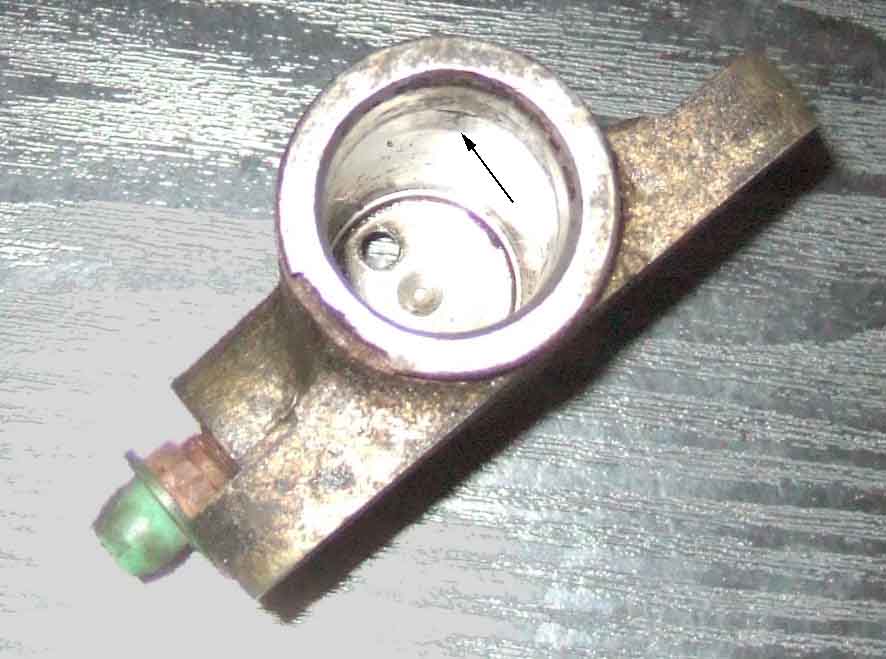Clutch Slave
4-cylinder V8
4-cylinder
Cleaned, seal positioning disc separated from the spring, and the external boot turned inside-out and its clamping ring removed. This also shows the correct position for the bleed nipple and hence the hose.
Tap the edge of the cylinder at an angle to dislodge the piston. This and the chamfer on the inside of the cylinder prevents a lip being created which will trap the piston.
Showing the very close fit between piston and cylinder wall. I have read one claim where so much wear had taken place that the piston got 'cocked' in the bore and jammed. I can't really see this, the seal would have become so loose it wouldn't seal at all long before that, more likely an under-sized piston had been used.
The outer boot with the larger diameter turned 'inside-out' to show the small inner ring that gives a seals the boot to the push-rod as well as the large outer ring that seals it to the cylinder.
The plastic disc that butts up to the fluid side of the seal, showing the three holes.
Not terribly clear, but the pale patch is significant erosion of the cylinder wall, the reddish area lighter corrosion.
Showing the bleed hole (circled) drilled along the line of the join of the cylinder wall to the back wall, in an arc at the top of the cylinder, normally at the highest point of the cylinder when the car is on its wheels or has the front raised.
Herb Adler's clutch slave seal, was sucking air in:
The muck and gunge both inside and outside






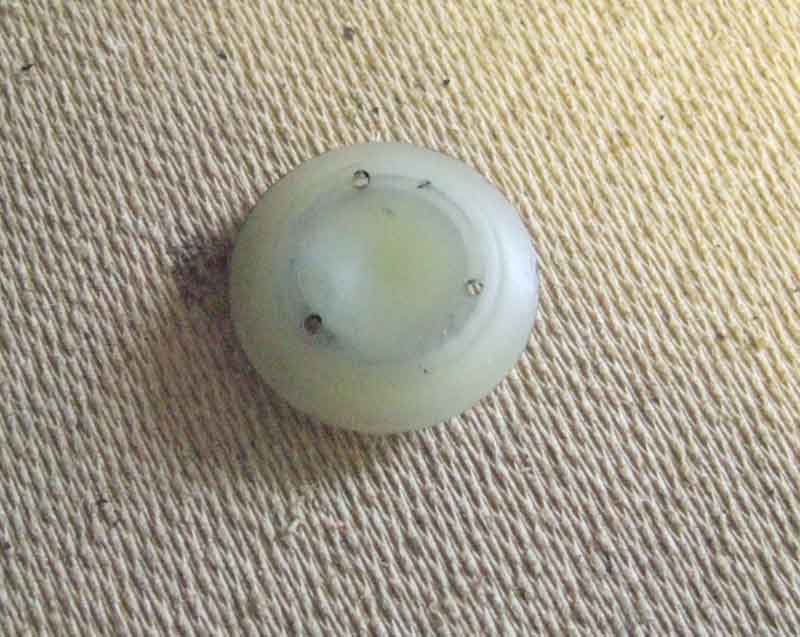
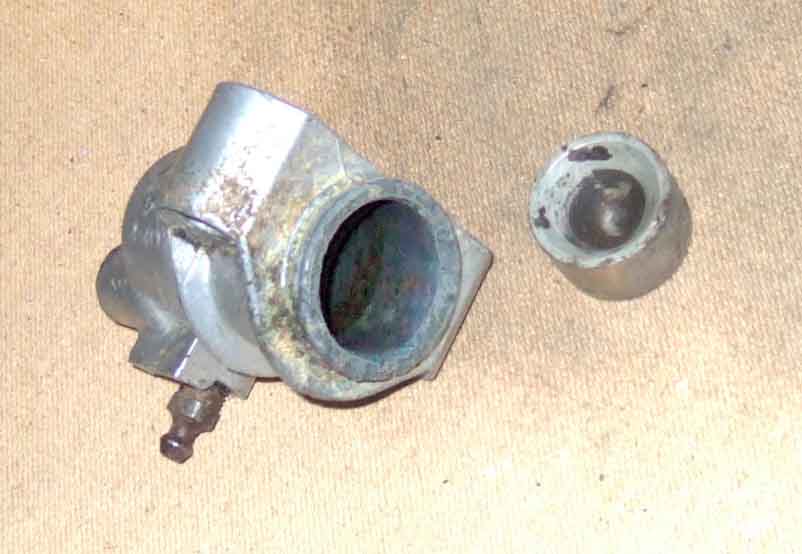
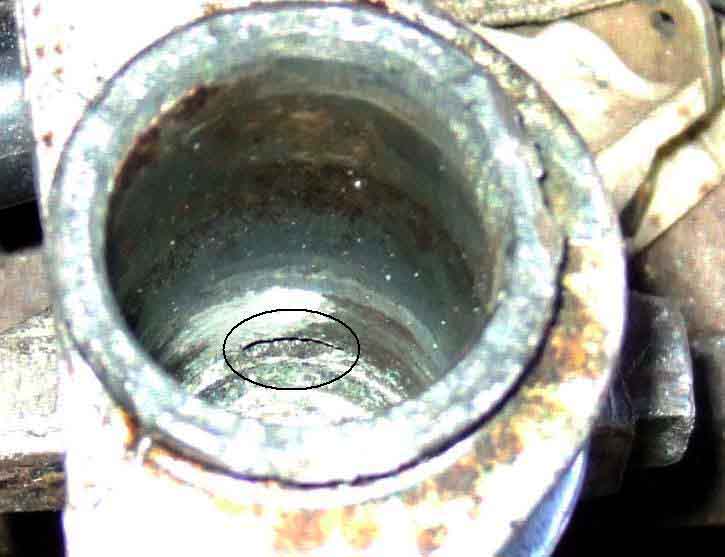
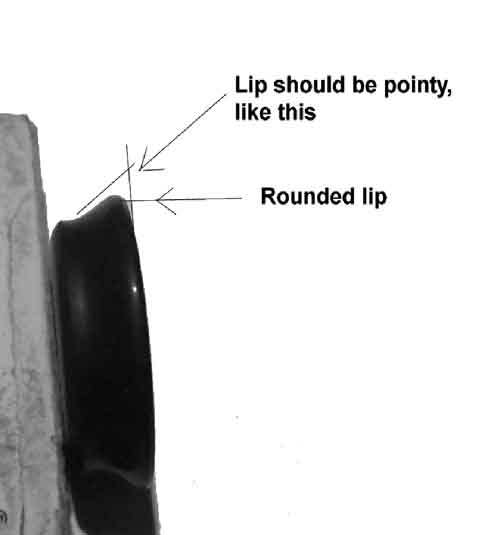
Vee's replaced because of a leak - significantly different. Instead of a 'loose' seal and piston as on the 4-cylinder the pressure seal here is a ring-seal that has to be stretched over the end of the piston and dropped into the groove, similar to brake slaves. Hence the longer piston, and longer slave overall. Also has the 'push out' spring confirming it's not solely used to spread the seal on the 4-cylinder type. Like Bee's brake slave I changed earlier this year the seal is only slightly wider than the piston, so doesn't bear very firmly onto the cylinder wall.
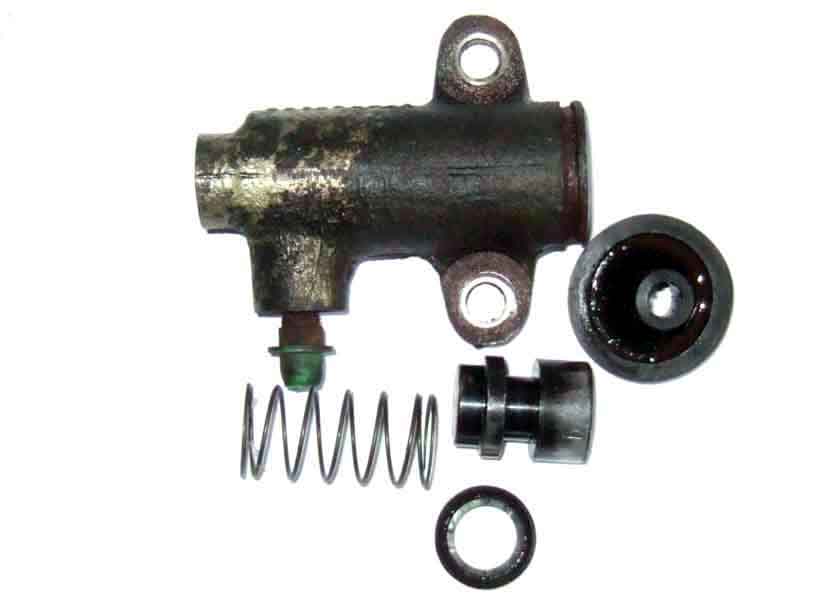
An alternative view of the boot, piston and seal. The end of the push-rod just rests in the large recess in this end of the piston
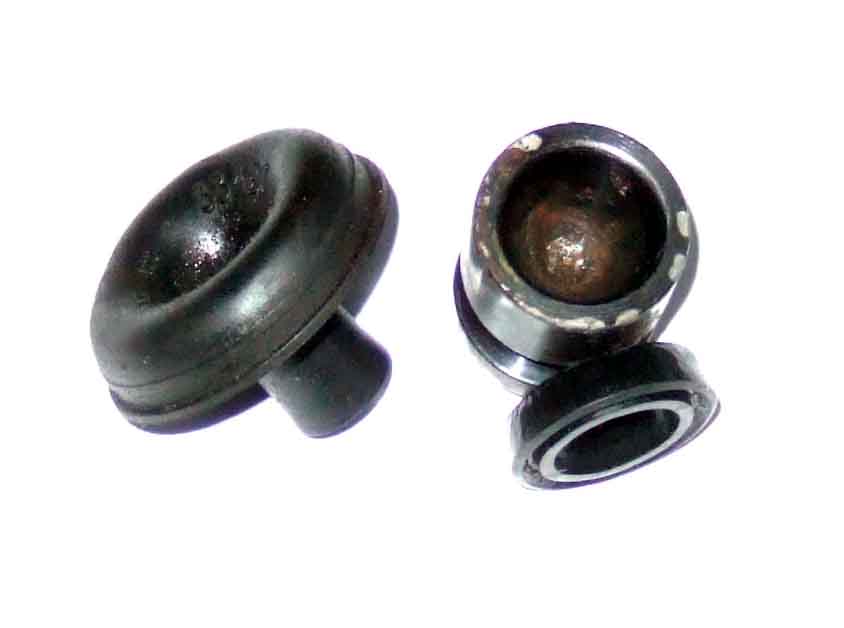
Internal of the cylinder showing the fluid entry and bleed ports. The walls are very clean apart from a ring of something at the extremity of movement of the seal, although this is the top half.
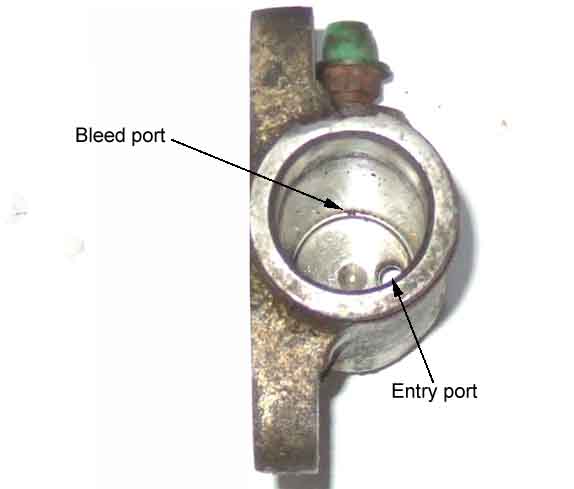
The lower half, showing a larger area of corrosion where water may have been laying. The problem is that as the clutch wears down the seal will move out bit by bit to take up the wear. The further it moves, the more it encroaches onto areas that have never been used. If any dampness has got into the boot, the risk of rusting and seal moving more and more onto it increases. Not only is this rough making for a poor seal, but it can also damage the rubber.
